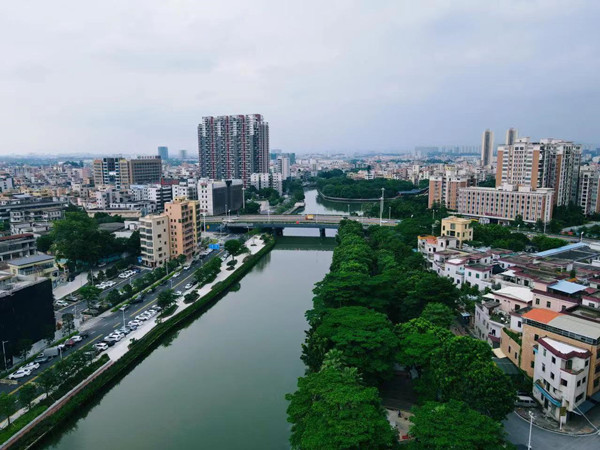Construction of the water quality test room of the Lishui River treatment project in South China's Guangdong Province, was completed on June 5.
The test room will be used to inspect the river treatment effect over time after the project's trial operation.
A key livelihood project in Nanhai, the treatment project was contracted by China Construction First Group Construction & Development Co., Ltd., a subsidiary of China State Construction Engineering Corporation (CSCEC).

A bird's-eye view of the area included in the Lishui River treatment project in South China's Guangdong Province [photo/sasac.gov.cn]
According to project manager Li Sibei, the project covers seven areas covering 66.01 square kilometers, includes 93 riverways in total.
It is expected to benefit about 180,000 people in 19 villages and communities, realize pollutant source control and improve the ecological environment of the Lishui River.
The Lishui River basin features a number of small branches distributed over a vast area. Most of the small and medium-sized branches have become pools of dead water because of long-term clogging.
To address the scattering dead water pools, the project team drew up a special plan to improve water quality by strengthening the self-cleaning capacity of the river branches.
Water recharging pumping stations and pipelines were installed in the area and running water was injected into the branches to improve their water volume and flow.
At the same time, aquatic plants and microorganisms were brought into the river branches to consolidate the water environment, which realizes ecological reshaping and improves the self-treatment capacity of the river branches.
In addition, the project team adopted a smart water system to achieve 24-hour detection and analysis of the river water bodies.
Thanks to the smart water system, the project's staff members are able to accurately obtain information of illegal sewage release in surrounding areas and provide data for decision-making regarding early flood warnings, flood-control measure implementation and supplementary water allocation into polluted waterways by analyzing the water quality big data.

A view of a river section that has been treated through the Lishui River treatment project [Photo/sasac.gov.cn]
So far, the project has completed construction of an 18.6-kilometer sewage interception pipeline network and a 16.5-kilometer water replenishment pipeline.
A total of 81,700 cubic meters of silt has been dredged through the project and some pipelines have already been put into operation.
(Executive editor: Wang Ruoting)